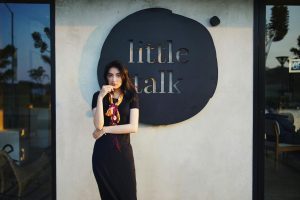How AI is shaping digital fashion collections now
Artificial intelligence (AI) is transforming industries across the board, and the world of fashion is no exception. Gone are the days of solely relying on human creativity to bring a collection to life. With the help of AI, designers are now able to create digital fashion collections that are innovative, efficient, and sustainable. In this article, we’ll dive into how AI is shaping digital fashion collections and the impact it’s having on the industry.
The Rise of AI in the Fashion Industry
In recent years, technology has become increasingly intertwined with fashion. From virtual fashion shows and augmented reality try-on experiences, to data-driven trend forecasting, AI has opened up numerous possibilities for the industry. And with the fashion world becoming more digitally focused, the use of AI is only expected to grow.
One of the main driving forces behind the rise of AI in fashion is the need for speed and efficiency. With fast fashion dominating the industry, brands are under pressure to produce new collections at an accelerated rate. This is where AI comes in, providing designers with the tools to create digital collections in a fraction of the time it would take to produce physical garments.
How AI is Shaping Digital Fashion Collections
Design and Creation
Traditionally, fashion designers would have to sketch out designs and then bring them to life through physical prototypes. This process can be time-consuming and expensive, especially when it comes to experimenting with different fabrics and materials. With AI, designers can skip the physical step and go straight to creating digital prototypes using virtual reality (VR) and 3D modeling techniques.
Not only does this speed up the design process, but it also allows designers to easily make changes and adjustments to their creations. Additionally, AI can assist with pattern making, fabric selection, and even predicting consumer demand for certain styles.
Personalization and Customization
One of the key benefits of AI in fashion is its ability to personalize and customize collections. With the rise of e-commerce, customers are expecting more personalized shopping experiences, and AI is helping brands deliver just that. Through analyzing customer data, AI can make suggestions for clothing styles and sizes that are tailored to individual preferences.
AI is also enabling the production of made-to-order garments, eliminating the need for excess inventory and reducing waste in the fashion industry.
Sustainability
Sustainability is a growing concern in the fashion world, and AI is playing a role in making the industry more environmentally friendly. By using AI for design and production, fewer physical samples are needed, reducing the carbon footprint of the production process. AI can also assist with optimizing supply chain and inventory management, reducing overproduction and unsold inventory.
Additionally, AI is being used to create sustainable materials, such as bio-fabricated leather and recycled fibers, further reducing the environmental impact of the fashion industry.
Trend Forecasting
Another way AI is shaping digital fashion collections is through trend forecasting. By analyzing vast amounts of data, including social media trends, consumer behavior, and global sales, AI can make accurate predictions about upcoming fashion trends. This information can then be used by designers to create collections that will resonate with consumers and increase sales.
The Impact of AI on the Fashion Industry
It’s clear that AI is revolutionizing the way fashion collections are created and produced, but its impact goes beyond that. The use of AI in fashion is also driving change in other areas, such as sustainability, personalization, and trend forecasting.
One potential concern with the rise of AI in fashion is its potential to replace human designers. However, many industry experts argue that AI should be seen as a tool for designers, not a replacement. Human creativity and intuition are still necessary for successful fashion design, but AI can enhance and streamline the process.
Furthermore, the use of AI in fashion has the potential to create more inclusive and diverse collections. By analyzing data from a wide range of sources, AI can identify trends that cater to a variety of demographics, rather than relying on a limited group of designers’ experiences and preferences.
Final Thoughts
AI is here to stay in the fashion industry, and its impact is only going to grow. By leveraging the power of AI, designers can create more efficient, sustainable, and personalized collections, ultimately leading to a more progressive and inclusive fashion industry. As technology continues to advance, it will be exciting to see how AI will further shape and transform the world of fashion.










